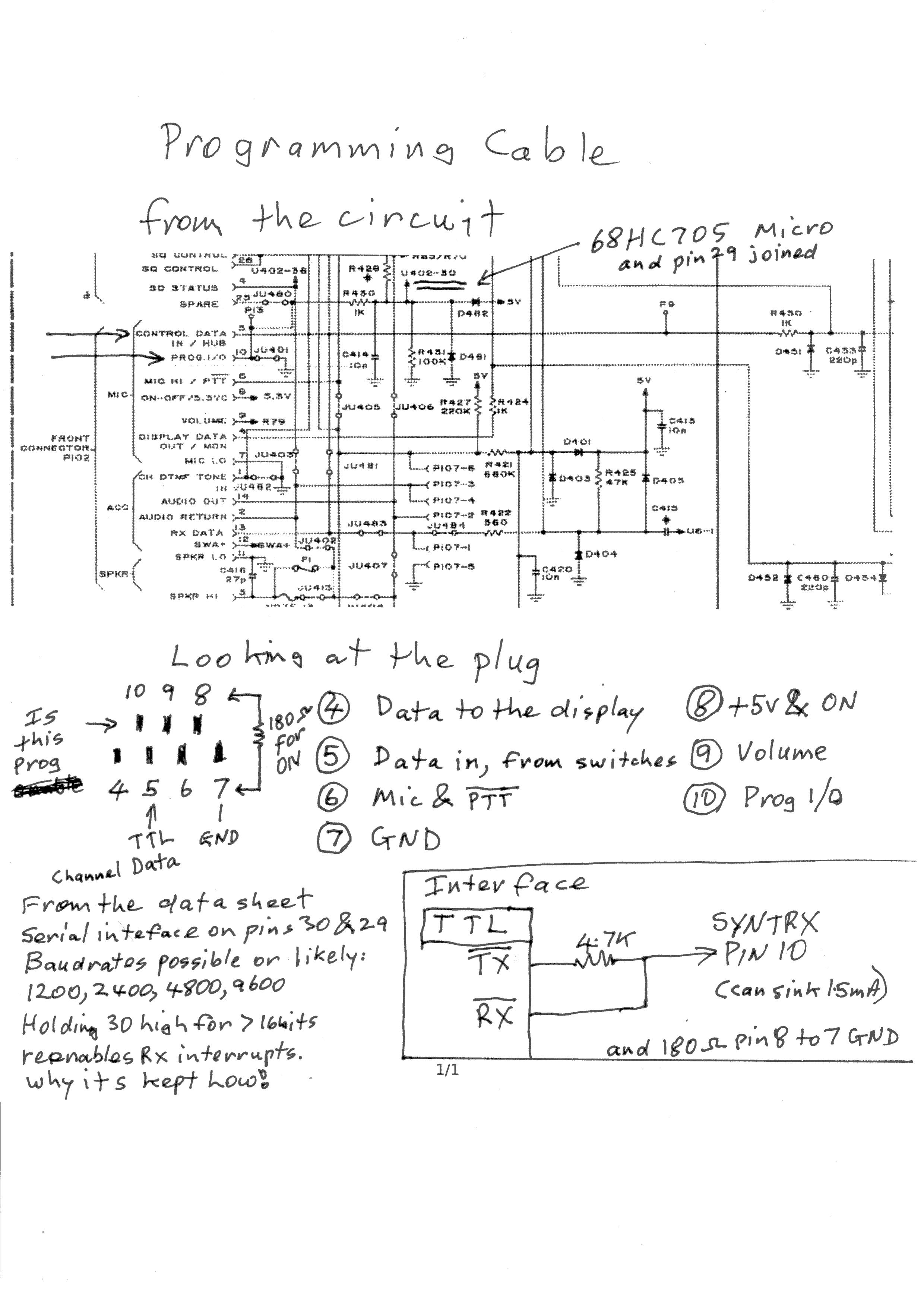Last updated 20/9/2021
If this is not your first visit here, please push your refresh button!!!
This unit commissioned in 1994, the Plus model uses an X24C16P eeprom rather than the earlier models with a fuse-link prom.
It's super easy to just change an eeprom and retune. I did this, moving a mid-band unit down to ham frequencies.
BTW....Don't think we here in Australia are alone with these wonderful beasts,
Rather than synthesize a 470MHz signal direct, requiring an expensive (for the day, 1985) prescaler chip,
synthesize at 1/3 frequency and tripple. Both Rx and Tx.
The file syntrx/x24c16ham70.rom is all channels 438.025 to 439.975 and -5MHz split and 123Hz CTCSS tone.
Files here:

syntrx/6805_eprom_programming.pdf syntrx/syntrx1.gif syntrx/x24c16ham70.hx syntrx/ham70_x24c16.zip syntrx/SYN2MTR.rom syntrx/UHF_SYNTRX_3857.JPG syntrx/x24c16ham70.rom syntrx/Interface-Syntrx2.gif syntrx/SYNAPRS.rom syntrx/syntrxdata.htm syntrx/x24c16ham70.txt syntrx/m170.jpg syntrx/x24c16a.rom syntrx/SYN2MTR.EES syntrx/MC145146-1_Motorola.pdf syntrx/syntjpgs.zip syntrx/x24c16b.rom syntrx/SyntrxProgIf2.jpg ========= PLUS Programming blues =========== ========= MUST USE SYNPLUS.EXE, ========= If it works for you - good luck. ====== This is NOT the route: =========== Run the DOS software under DOSBOX. Use the early software for the Pro to generate a .PRM file. Use CONVERT.EXE to generate a .EES file for the X24C16 chip. This does NOT generate a usable eeprom image! It seems, one has to read it with SYNPLUS.EXE and program the radio. Program that with your MiniPro TL866 universal programmer. ====== WHAT YOU NEED TO KNOW ABOUT SYNPLUS.EXE ====== The USB serial adapter FTDI chipset does not do 5bit mode!!!! The PL2303 from Prolific does. But there are fakes!! The 5bit mode is setup when SYNPLUS.EXE "opens" the COM port. After "init" it sets 9600 baud mode. The SYNTRX Plus micro MC68HC705P with a 4MHz xtal can do 300, 600, 1200, 2400, 4800 and 9600 baud. Not 19200 and up. Looking at the circuit, we have a 1k resistor in series and a 10n cap to GND from your TTL level input - not good at 9600 baud. The programmer supplies through a 4k7 resister, even worse. Check with your CRO, pin 30 of the micro! The 10n cap is the second part left of the 4MHz xtal. The micro MC68HC705P serial port wakes up when it's input (pin 30) is held high, this is why we have a 100k pulldown. ===== Hardware Handshake on the RS232 port ========= Link DTR to DSR and RTS to CTS leave CD open, as emulators such as DOSBOX do pass these signals through. And SYNPLUS.EXE obeys. ===== The ONE-WIRE interface ===== Comms is via one wire! Both Rx and Tx to/from the micro signals TD0 (pin29) and RD0 (Pin 30) are linked. This means, data sent is immediately received and must not generate errors on the receiver. eg. Framing errors which I got! ===== SYNPLUS.EXE error messages ===== No Radio Found ---- SYNPLUS is sending and receiving data ===== Radio beep messages ===== Usually mean, the Rx PLL is unlocked. Check the voltage on the pad near the yellow 15nJ100 capacitor, should be around 5V, definitely not 0.1 or 9 Volts. (What's wrong, I don't know yet!)